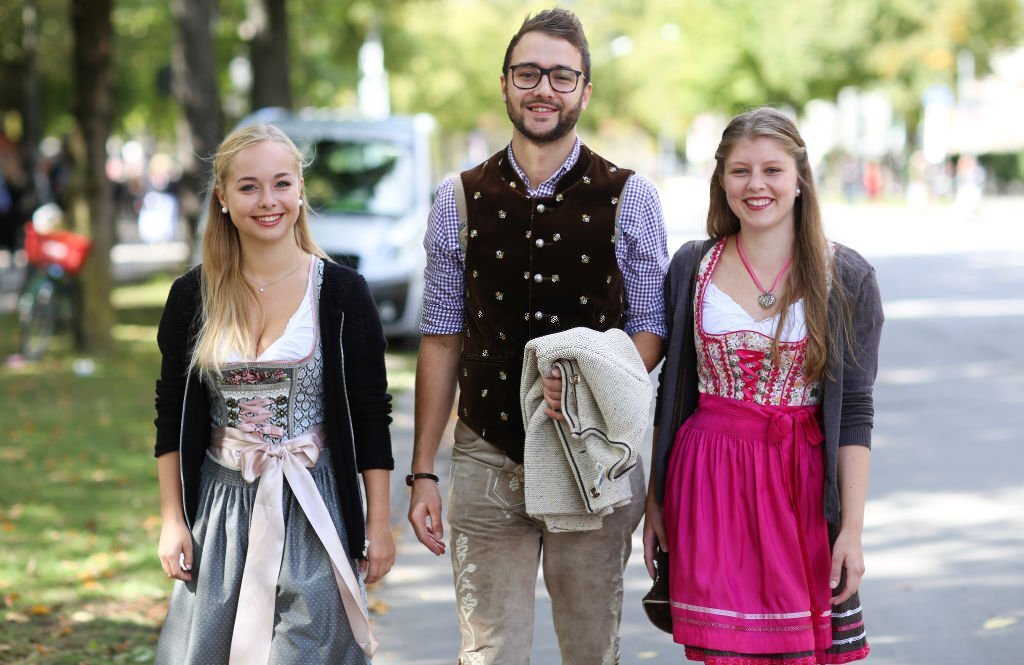Germany boasts a rich cultural heritage, and one of its most visually striking aspects is its German costume tradition. From lederhosen and dirndls to regional variations of folk clothing, these garments have been an essential part of German identity for centuries. Traditional German attire is not just about fashion; it reflects history, craftsmanship, and cultural pride. Whether worn for Oktoberfest, regional celebrations, or as a nod to ancestral heritage, these costumes continue to captivate people worldwide.
The History and Significance of German Costume
The concept of German costume dates back to medieval times when different regions developed unique styles based on climate, occupation, and local traditions. While these costumes were initially practical, they evolved into symbols of social status and regional identity. In Bavaria and Austria, lederhosen became the traditional wear for men, while women donned the elegant dirndl, characterized by a fitted bodice, full skirt, and apron. Over time, these garments became synonymous with German folk culture and are now commonly associated with festivals like Oktoberfest.
Throughout history, traditional German attire has undergone various transformations. In the 19th century, King Ludwig II of Bavaria played a significant role in preserving traditional Bavarian attire, encouraging its use in official ceremonies. Today, while modern clothing dominates everyday life, traditional German attire remains a cherished part of celebrations, tourism, and even fashion.
The Elements of Traditional German Attire
Traditional German attire consists of several iconic garments, each with deep cultural significance. The most well-known pieces include:
Lederhosen (Men’s Traditional German Costume)
Lederhosen, meaning “leather pants,” is perhaps the most recognizable element of German costume. These knee-length or short leather breeches were originally worn by peasants and workers due to their durability. Over time, they became a signature piece for Bavarian and Austrian men, often adorned with embroidery and worn with suspenders. Today, lederhosen is a must-have outfit for Oktoberfest and other cultural events.
Dirndl (Women’s Traditional German Attire)
The dirndl is the female counterpart to lederhosen and consists of a bodice, blouse, full skirt, and apron. This elegant yet practical attire originated from Alpine farmworkers’ clothing but eventually became a symbol of German femininity and grace. The way a woman ties her apron can even indicate her marital status—tied on the left means single, on the right means taken, and in the back signifies widowhood.
Trachten Jackets and Waistcoats
Trachten jackets and waistcoats add sophistication to traditional German attire. Made from materials like wool or suede, these pieces are often worn over lederhosen or dirndls, especially in colder weather. Their intricate buttons and embroidery reflect regional craftsmanship and elevate the elegance of the attire.
Haferl Shoes
No traditional German attire is complete without the right footwear. Haferl shoes, made from high-quality leather, are sturdy and designed for comfort. They perfectly complement lederhosen and offer a rustic, traditional look.
Accessories in German Costume
Accessories such as Alpine hats (with feathers or pins), charivari chains (worn with lederhosen), and delicate dirndl jewelry add personality to traditional German attire. These finishing touches enhance authenticity and honor German heritage.
The Role of Traditional German Attire in Modern Fashion
While traditional German attire is primarily associated with cultural celebrations, it has influenced modern fashion in surprising ways. Many contemporary designers have incorporated elements of German folk clothing into their collections, blending classic silhouettes with modern fabrics and cuts. Oktoberfest itself has seen an evolution in style, with trendier versions of lederhosen and dirndls gaining popularity among younger generations.
Additionally, brands like eLederhosen have played a crucial role in keeping German costume relevant by offering high-quality, handcrafted lederhosen and dirndls. Their collections cater to both traditionalists and modern fashion enthusiasts, ensuring that German heritage remains alive in the fashion world.
Choosing the Right German Costume for You
If you’re looking to invest in a German costume, it’s essential to consider authenticity, quality, and comfort. Here are some tips for choosing the perfect outfit:
- Determine the Occasion: Whether attending Oktoberfest, a themed event, or a cultural celebration, select an outfit that suits the formality of the occasion.
- Focus on Quality: Authentic lederhosen and dirndls are made from premium materials like suede, deerskin, or high-quality cotton.
- Find the Right Fit: Traditional German attire should be well-fitted but comfortable. Lederhosen should be snug around the waist, and dirndls should accentuate the waist while allowing freedom of movement.
- Shop from Trusted Brands: Brands like eLederhosen specialize in authentic German clothing, ensuring durability and cultural accuracy.
German Costume in Cultural Celebrations and Tourism
One of the primary reasons traditional German attire has remained relevant is its deep connection to cultural festivals and tourism. Events such as Oktoberfest, Cannstatter Volksfest, and various regional folk festivals highlight the significance of German clothing. Tourists visiting Bavaria and other German-speaking regions often purchase lederhosen or dirndls as souvenirs, further promoting the global recognition of German costume.
Furthermore, costume clubs and cultural organizations work diligently to preserve authentic styles and educate people about the history behind these garments. Many regions still have strict dress codes for traditional events, ensuring that their cultural heritage is upheld and passed onto future generations.
How eLederhosen Promotes Authentic German Costume
As a leading brand in traditional German attire, eLederhosen is dedicated to crafting premium-quality outfits that blend authenticity with modern comfort. Their collection features hand-stitched lederhosen made from genuine leather, intricately designed dirndls, and a range of accessories that complement the overall look. By using time-honored techniques and high-quality materials, eLederhosen ensures that customers receive not just a costume but a piece of German heritage.
Additionally, eLederhosen caters to international buyers who wish to embrace German culture. Whether for Oktoberfest celebrations abroad or themed events, the brand offers worldwide shipping, making authentic German costumes accessible to all. Their dedication to craftsmanship and cultural preservation makes them a trusted name in the world of traditional German attire.
Conclusion
The beauty of German costume lies in its deep-rooted history, exquisite craftsmanship, and timeless appeal. Whether you choose lederhosen for a Bavarian festival or a dirndl for a cultural event, traditional German attire continues to be a symbol of heritage and pride. With brands like eLederhosen offering top-quality options, anyone can embrace the elegance of German folk clothing and celebrate its enduring legacy. Whether for fashion or festivity, wearing traditional German attire connects individuals to a rich cultural tradition that remains relevant in today’s world.



































